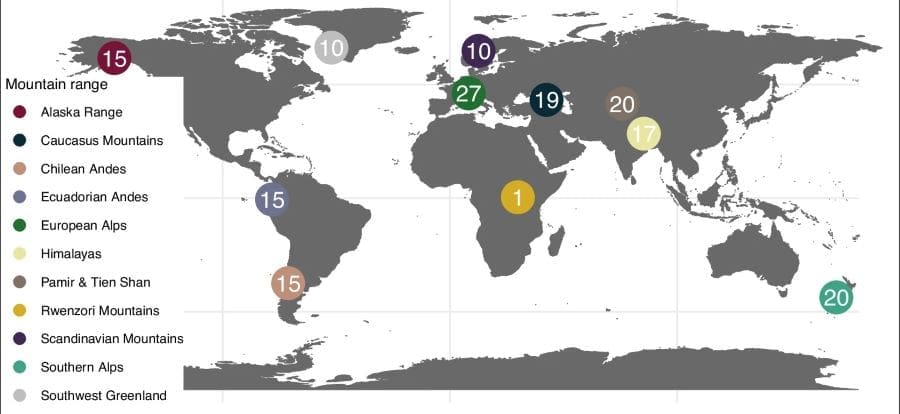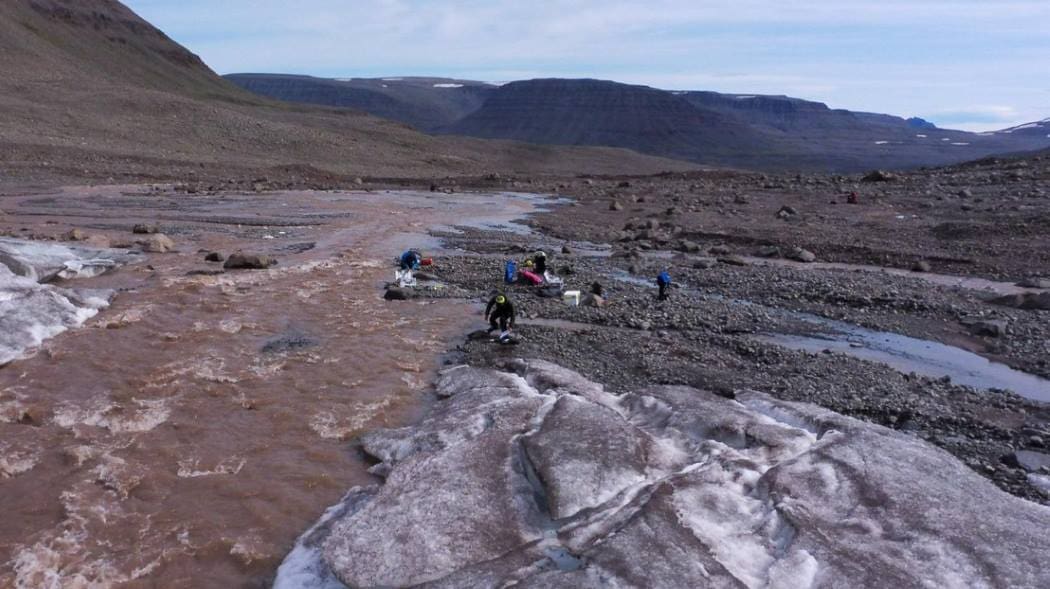Summary:
Glacier-fed streams, the lifelines of many major rivers worldwide, are undergoing a profound transformation due to climate change. As glaciers retreat, these extreme ecosystems – home to specialized microbial communities – are changing in ways never before studied.
A new study published in Nature Communications by researchers at EPFL’s Vanishing Glaciers project offers the first predictive models of how these streams and their microbiomes could evolve by the end of the century. Scientists analyzed bacteria from 164 glacier-fed streams across global mountain ranges, finding that as glacial conditions disappear, these ecosystems will become greener, favoring algae and altering microbial diversity.
Many bacteria uniquely adapted to glacial conditions may vanish, impacting water purification, nutrient cycling, and the broader food web. Researchers emphasize the urgency of protecting these irreplaceable microbial habitats, as their loss could have cascading effects on river ecosystems worldwide.

Glacier melt puts unique microbial ecosystems under threat
Climate change is causing the world’s glaciers to disappear at an alarming rate. Scientists have been studying and modeling this process for years, but until now, no research group has specifically examined how glacier melt will affect glacier-fed streams and their ecosystems.
A study carried out under the Vanishing Glaciers project, led by EPFL, has been recently published in Nature Communications. It establishes the very first forecasts of what these streams and their microbiomes could look like by century-end under various climate-change scenarios.
Essential sources for the world’s main rivers
“Glacier-fed streams are the sources of some of the world’s largest river systems, supplying vital water to billions of people,” says Hannes Peter, a scientist at EPFL’s River Ecosystems Laboratory (RIVER) and a co-author of the study. “If we take Switzerland as an example, nearly all its main rivers – including the Rhone, Inn and Adige – derive from glacier-fed streams. So the changes that take place at high altitudes have a direct impact on everything that occurs downstream. That’s why it’s so important to understand how melting glaciers will affect these streams and their unique microbial ecosystems.”
Analyzing thousands of bacteria
“In our study, we reconstructed and analyzed genetic data from 2,333 different kinds of bacteria extracted from samples of 164 glacier-fed streams located in all the world’s major mountain ranges,” says Massimo Bourquin, the study’s lead author. Bourquin is a former PhD student at RIVER and now works as a technical expert at EPFL’s Microbiome Adaptation to the Changing Environment Laboratory. “Then we combined this information with data on the climate, glaciers and the environment to develop predictive models showing how various bacteria groups would likely respond to fluctuations in specific variables.”
“Our method didn’t involve just analyzing bacteria in isolation,” says Bourquin. “We also investigated key microbiome characteristics such as diversity and the distribution between dominant and rare species. All this gave us a fuller picture of how climate change could affect these ecosystems and their microbiome under different scenarios.”
Greener glacier-fed streams
The study predicts that glacier-fed streams will literally become greener. “The conditions in these streams are currently so extreme that many microorganisms typically found in Alpine streams, and especially algae, can’t live in them,” says Bourquin. This extreme environment consists of very low temperatures, large swings in water flow rates, a high concentration of fine sediment that clouds the water and reduces light penetration, scarce nutrients and low oxygenation.
“This combination of factors has created a distinctive microbiome adapted to these particular conditions.” says Bourquin. “But as these streams lose their glacier-specific characteristics, the microbiome will evolve to look more like those in other Alpine streams. As a result, algae will multiply, leading to more photosynthesis, a higher concentration of organic matter available for microorganisms, and eventually a proliferation of both algae and bacteria.”
An invisible microbial resource now under threat
These changes mean that bacteria groups adapted specifically to the conditions in glacier-fed-streams are set to disappear, with significant ramifications for the ecosystems in these streams as well as further down the chain.
“It’s likely that some of the bacteria specialized in surviving in glacial conditions won’t be able to survive in greener habitats, enabling species that are better suited to the new conditions to take over,” says Bourquin.
“When you see glaciers melt, it’s not just the water that disappears,” says Tom Battin, a full professor of environmental science, head of RIVER and co-author of the study. “We’re also losing a unique microbiome. These microorganisms, although invisible to the naked eye, play a crucial role in their ecosystems: they purify the water, recycle nutrients and regulate important cycles like those involving nitrogen and carbon. Ultimately, they support the food chain and are crucial to many environmental equilibria.”
Although the glacier-fed streams examined in the study are located in many different world regions, their characteristics varied little. “What was particularly striking in our study was that the microbiomes from all the streams we analyzed were very similar to each other,” says Bourquin. “That’s due to the extreme conditions specific to glaciers, and it shows how important these properties are for microbial ecosystems. If we don’t want to lose these irreplaceable habitats as glaciers melt, we need to protect them.”
***
The Glacier Stewardship Program – an international team responding to the global loss of glaciers
To safeguard our planet’s glaciers, mitigate the environmental and economic impacts of their rapid melting and protect their biodiversity, scientists from EPFL, ETH Zurich and Universität Innsbruck initiated the Glacier Stewardship Program. More than 20 other universities and research institutions worldwide are part of the initiative.
This alliance of scientists is committed to tackling the challenges and consequences of glacier loss through three key priorities:
* Developing novel technical approaches to slow ice loss at the local scale, and systematically evaluate and test in collaboration with local communities and stakeholders.
* Advancing early-warning systems to better protect communities from glacier-related hazards in some of the world’s most perilous mountain ranges.
* Establishing a unique biobank to safeguard glacier microorganisms for future generations and harness their power for mitigating consequences of climate change.
Journal Reference:
Bourquin, M., Peter, H., Michoud, G. et al., ‘Predicting climate-change impacts on the global glacier-fed stream microbiome’, Nature Communications 16, 1264 (2025). DOI: 10.1038/s41467-025-56426-4
Article Source:
Press Release/Material by Leila Ueberschlag | EPFL
Featured image credit: © 2022 Mike Styllas | EPFL | CC-BY-SA 4.0




